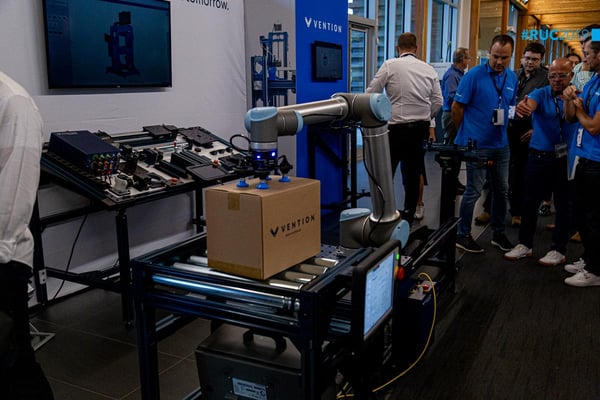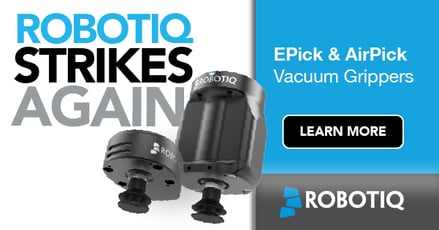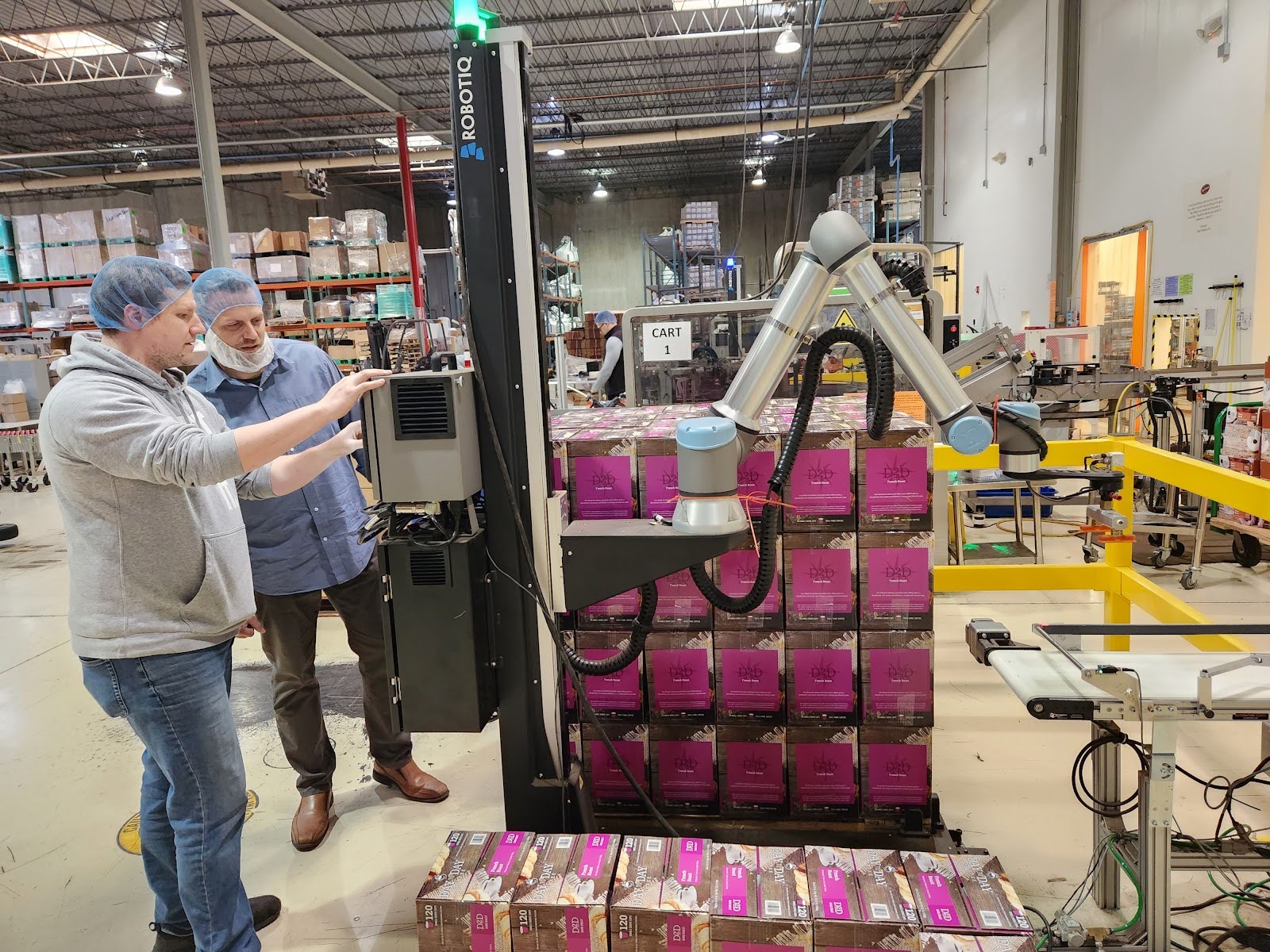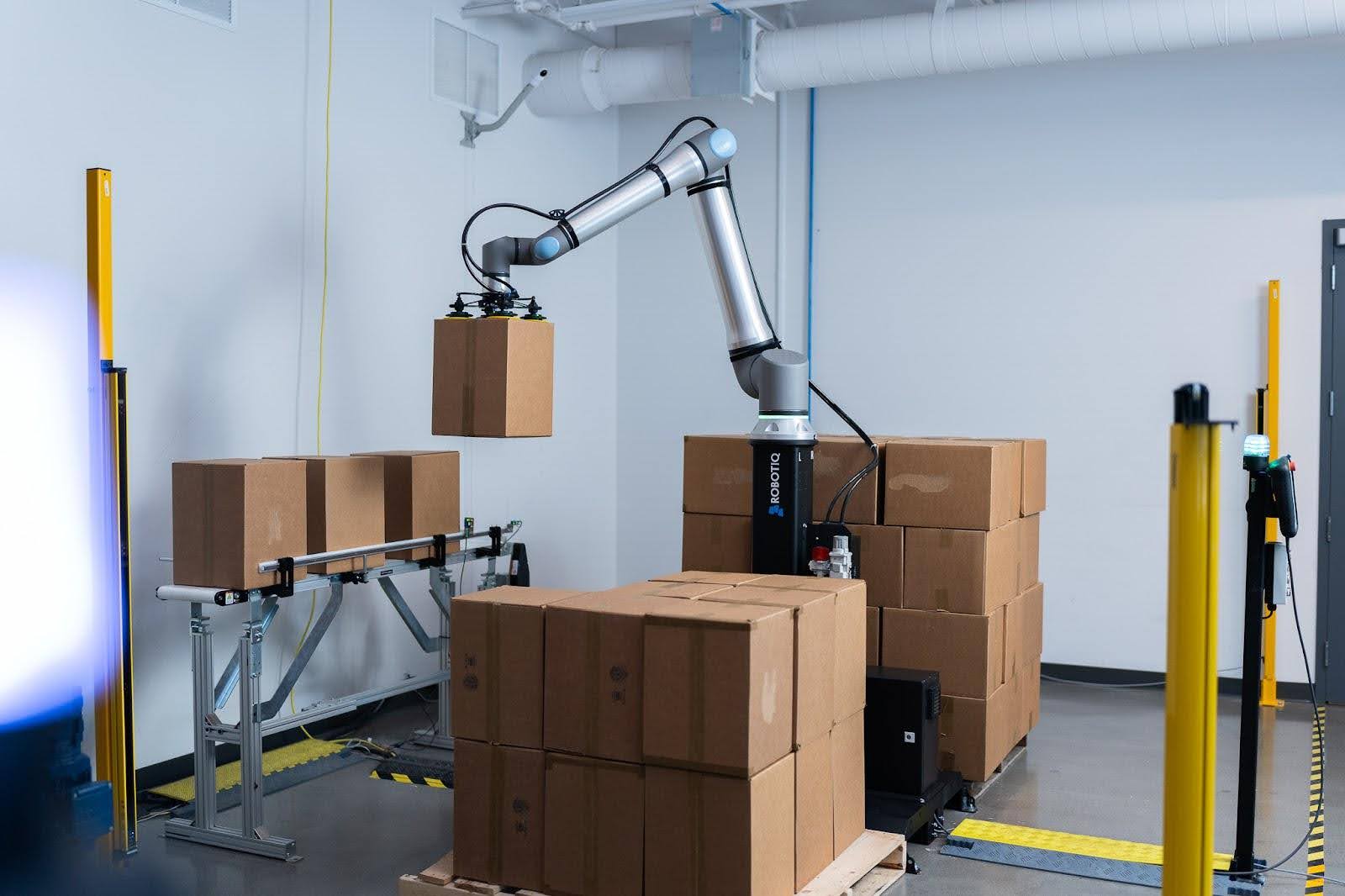How to Future-Proof Your Packing or Palletizing Task

Posted on Nov 21, 2019 11:02 AM. 6 min read time
Robotic packing can transform your end-of-line. But, you don't want your investment to go out of date too fast, do you? Here's how to future proof it.
You can transform your packing and palletizing jobs by investing in a collaborative robot. Packing tasks are repetitive, boring, and potentially stressful for human workers because they are such high-demand and never-ending. They are a perfect candidate for collaborative robot automation!
However, any new technology is only worth your investment if it will keep bringing you a return long into the future. You don't want to pay for the latest cobot only to find the next month that it has "gone out of date" or no longer meets the needs of your packing task.
As an investment, cobots generally have a fast payback time — usually less than a year (though Voodoo Manufacturing achieved a ROI in just 6 months!). Even so, you want your packing robot to stay relevant for years to come.
Here's how to future-proof your collaborative robot packing task.
Plan for unexpected changes
If you want to future-proof our packing cell, you need to… actually plan for the future. It's that simple!
People rarely make formal plans for how they will keep their robot cell up-to-date. They are so busy with the initial robot integration, they don't consider how the needs of their packing cells will change over the next year or more.
Later, when they need to change the cell, they have to do a lot of backtracking.
The problem is that we don't know how our packing needs will change in the future. We have to "plan for the unexpected", which is obviously a challenge.
Pick agility over robustness
The solution is to design a robot cell which has "agility" rather than "robustness."
Here's what these two terms mean with regards to a packing cobot:
- Agility — The cobot system is more adaptable to unplanned changes. It can be easily updated, moved, and adapted for the changing needs of the task.
- Robustness — The cobot system is more adaptable to planned changes. It has all the sensors, fixtures, and advanced programming to handle many different products without reprogramming.
Cobots can be used for either of these two approaches. But, the key to future-proofing your cell is to design it in an agile way. Instead of prioritizing your current packing needs as you design your robot cell, always consider how your products and packing needs might change in the long term.
Pick flexible end-of-arm tooling
One of the best ways to ensure that your packing cell is agile is to pick the right robot end effector from the start. As the "business end" of your robot, the end effector can make a huge difference to the productivity and flexibility of your packing task.
As logistic company Bastian Solutions explains, even if you do have to alter a palletizing end effector, making the right choice upfront will make these alterations much easier.
There are two basic choices for cobot grippers:
- Fingered grippers — These are very adaptable but they are restricted to holding only one object at a time (or two with a dual gripper). If you need to increase the throughput of your packing operation, a fingered gripper may restrict you from doing so.
- Vacuum grippers — The classic option for packing and palletizing tasks… and with good reason. Vacuum grippers can pick up multiple objects simultaneously — and faster than most fingered grippers — meaning that they can handle increased throughput much more effectively. They are also easy to customize.
When designing your packing or palletizing cell, consider how the throughput and products may change over time. Your choice of end effector will affect how easy it is to make such changes.
Commit to reducing waste
Reducing waste is high on the agenda in the packing industry right now. Future-proofing your packaging is a good idea and involves removing all unnecessary waste from the packing process.
Reducing waste is also a great way to future-proof your cobot cell.
Reduce waste in packaging
Packing has traditionally been a very wasteful process. The drive towards sustainability means that more and more companies are looking for ways to improve their packing tasks.
As Industrial Packaging explains, there are more benefits to reducing waste than just the environmental impact. It can also reduce costs and attract more customers.
Reduce waste in robotics
Reducing waste is also one of the pillars of Lean Robotics, our framework for incorporating robotics into your business.
Try to adopt a culture of continuous improvement surrounding robotics. This allows you to start simple with your first packing or palletizing cell and only add extras when they are needed.
Invest in robotics training
The traditional approach to adding a palletizing robot is to say "let's get an integrator in and they'll do everything." With traditional palletizing robots, this often makes sense. However, this approach comes at a price.
Having an integrator perform all of your robot integration means that members of your team do not have the skills to alter the robot cell. Collaborative robots are very easy to learn and the way to future-proof your robot packing cell is to train your workers in robotics.
There are at least 5 different ways to train your workers in robotics. By creating a training program from the start, you can ensure that your whole team is future-proofed.
Keep packing team in the loop
Your packing workers might be uncertain when you first propose the idea of introducing a packing or palletizing robot to the business. If left unchecked, this uncertainty can lead to bad feelings which, ultimately, can ruin the chances that your robot cell will succeed.
The best way to ensure your packing robot will be a valuable addition to your process long into the future is to develop a "culture of robotics." Keep your packing team in the loop about the developments and involve them in the process from the beginning.
When your team is on board with robotics, the packing cell will be sure to be a success.
You can start to reduce your ressources waste with the palletizing solution.
How do you see packing tasks changing in the future? Tell us in the comments below or join the discussion on LinkedIn, Twitter, Facebook or the DoF professional robotics community.










Leave a comment